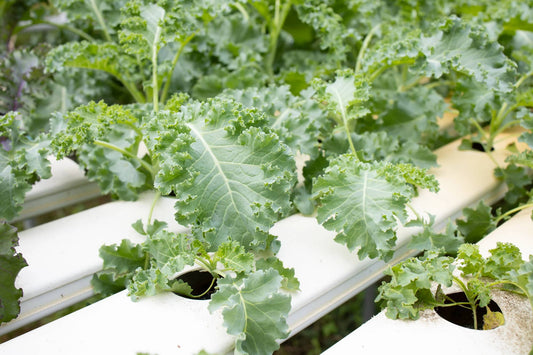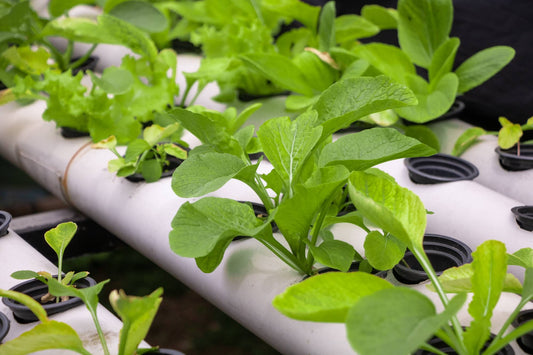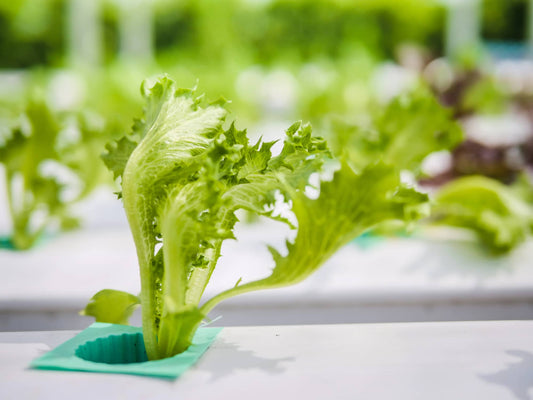Strawberries germinate from seeds, developing into plants that produce flowers and runners. The edible part is the enlarged flower base, while the true fruits are the tiny seeds on its surface. As strawberry plants grow, they produce delicate white flowers that eventually transform into the bright red fruit we all know and love. These sweet and juicy berries are not only delicious but also rich in essential nutrients such as vitamin C and antioxidants. The runners, or horizontal stems, play a crucial role in the plant’s propagation, allowing it to spread and form new strawberry plants.
Why Grow Strawberries Hydroponically?
Hydroponic strawberry cultivation allows for year-round production in controlled environments. By providing optimal growing conditions, hydroponic systems boost fruit yield, enhance flavor, and lower disease risks compared to traditional soil-based farming. Effective nutrient management guarantees healthy plants and high-quality strawberries.
Health Benefits of Strawberries
- Digestive Health – Strawberries are rich in fiber, promoting digestive health, aiding in weight management, and contributing to feelings of fullness.
- Full of Antioxidants – Packed with antioxidants like vitamin C and flavonoids, strawberries help combat oxidative stress and inflammation.
- Heart Health – The antioxidants and potassium in strawberries contribute to heart health by reducing blood pressure and preventing heart disease.
- Skin Health – Vitamin C in strawberries is vital for collagen production, which helps improve skin elasticity and resilience.
Growing Hydroponic Strawberries: Step-by-Step Guide
Growing Cycle
- Germination – Takes between 7–14 days.
- Seedling to Mature Plant – Requires 20–30 days.
- Flowering and Fruit Development – Occurs 30–40 days after planting, with fruit development shortly after.
- Harvest – Begins around 60–90 days for everbearing varieties. June-bearing varieties may take up to a year for fruit production.
Optimal Growing Conditions
- Season: The general recommendation is to plant in early spring or late summer for summer or fall harvest. In greenhouses, they can also be planted in fall for a winter-to-spring harvest.
- Temperature: Optimal strawberry growth requires daytime temperatures between 60°F to 80°F (15°C to 27°C) and cooler nights at 55°F to 65°F (13°C to 18°C).
- Humidity: The ideal relative humidity (RH) for growing strawberries in controlled environments like greenhouses or indoor hydroponic systems is 70–80% during the day and 65–75% at night.
- Sunlight and Indoor Light Requirements: Strawberries require 6 to 8 hours of direct sunlight daily for healthy growth and to ensure a bountiful harvest. For indoor systems, grow lights should provide a DLI range of 17 to 22 mol/m²/day.
Nutrient and pH Requirements
Recommended EC (Electrical Conductivity):
- Seedling Stage: Maintain EC at 1.0–1.2 mS/cm to foster strong root development.
- Vegetative Growth: Increase EC to 1.2–1.4 mS/cm to support leaf and flower development.
- Fruiting Stage: Adjust EC to 1.4–1.8 mS/cm to enhance fruit formation and quality.
pH Range:
- The optimal pH range for hydroponic strawberries is 5.8 to 6.2, ensuring efficient nutrient uptake and overall plant health.
Essential Growth Practices
Oxygenate Roots: Maintain healthy, oxygen-rich root systems by using an air pump in your water reservoir. This is essential for nutrient uptake and the overall health of the plant.
Strategic Pruning: Regularly prune by removing runners and dead or yellowing leaves to direct energy toward fruit production and improve air circulation, thus reducing the risk of disease.
Nutrient Refresh Cycle: Change your nutrient solution every 2–3 weeks to prevent salt and pathogen buildup, ensuring your strawberries receive fresh, balanced nutrients.
Runner Propagation: To create new plants, allow some runners to develop and root in separate pots filled with a suitable growing medium. Once established, they can be separated from the mother plant and cultivated as new individuals.
Pollination Assistance
To manually pollinate strawberries, gently brush or shake the flowers to transfer pollen. This process is essential in controlled environments where natural pollinators are absent, as it ensures fruit development and optimal yields.
Common Strawberry Varieties
- June-bearing – Produces a large crop in early summer and requires long days to flower.
- Everbearing – Yields two to three harvests per season, providing berries throughout the year.
- Day-neutral – Produces fruit continuously as long as temperatures remain between 35°F and 85°F (2°C to 29°C).
- Alpine – Small, intensely flavored berries that do not produce runners.
- White – A unique variety with a mild taste and white flesh.
- Mara des Bois – A French variety known for its fragrant aroma and rich flavor.
Conclusion
Hydroponic strawberries offer numerous advantages, such as year-round cultivation, increased yields, and superior fruit quality. By maintaining optimal environmental conditions, ensuring nutrient balance, and employing proper pruning techniques, growers can secure a successful harvest. Whether cultivated for home consumption or commercial production, strawberries flourish in hydroponic systems, providing delicious and nutritious fruit with minimal effort.




